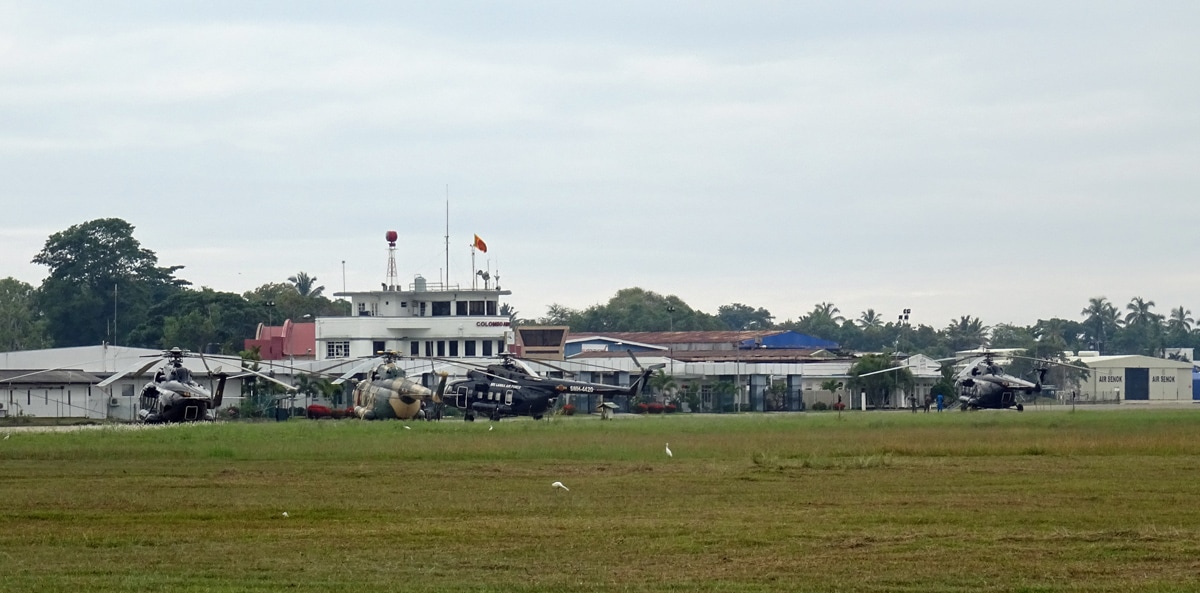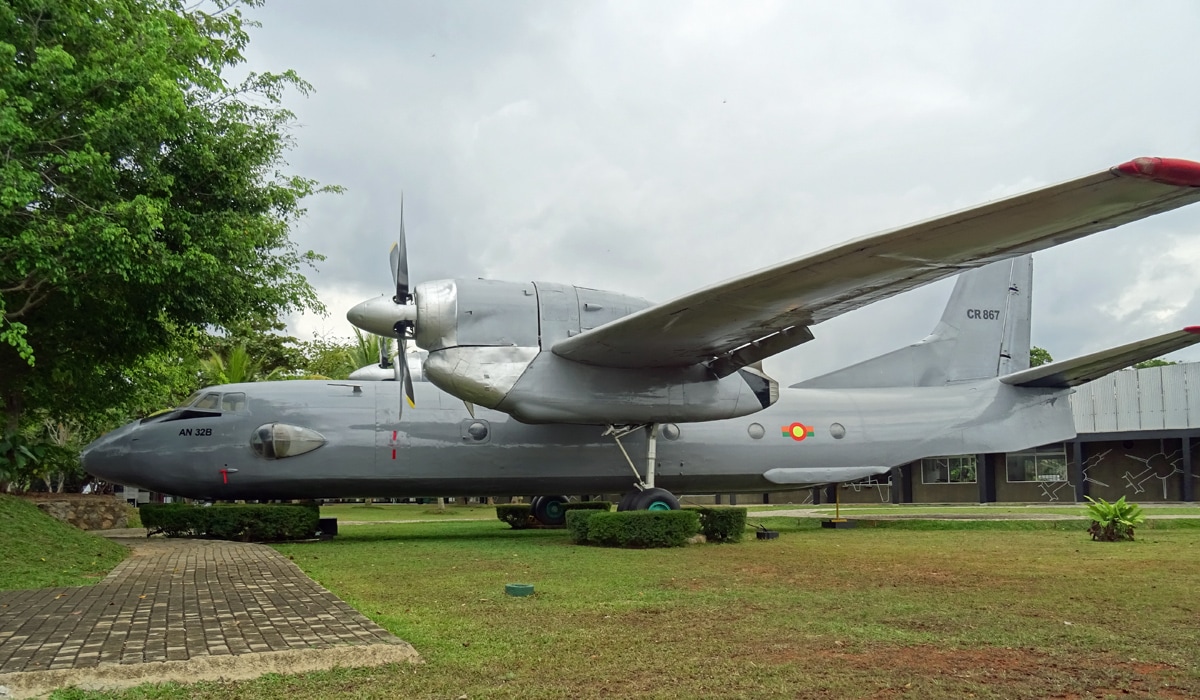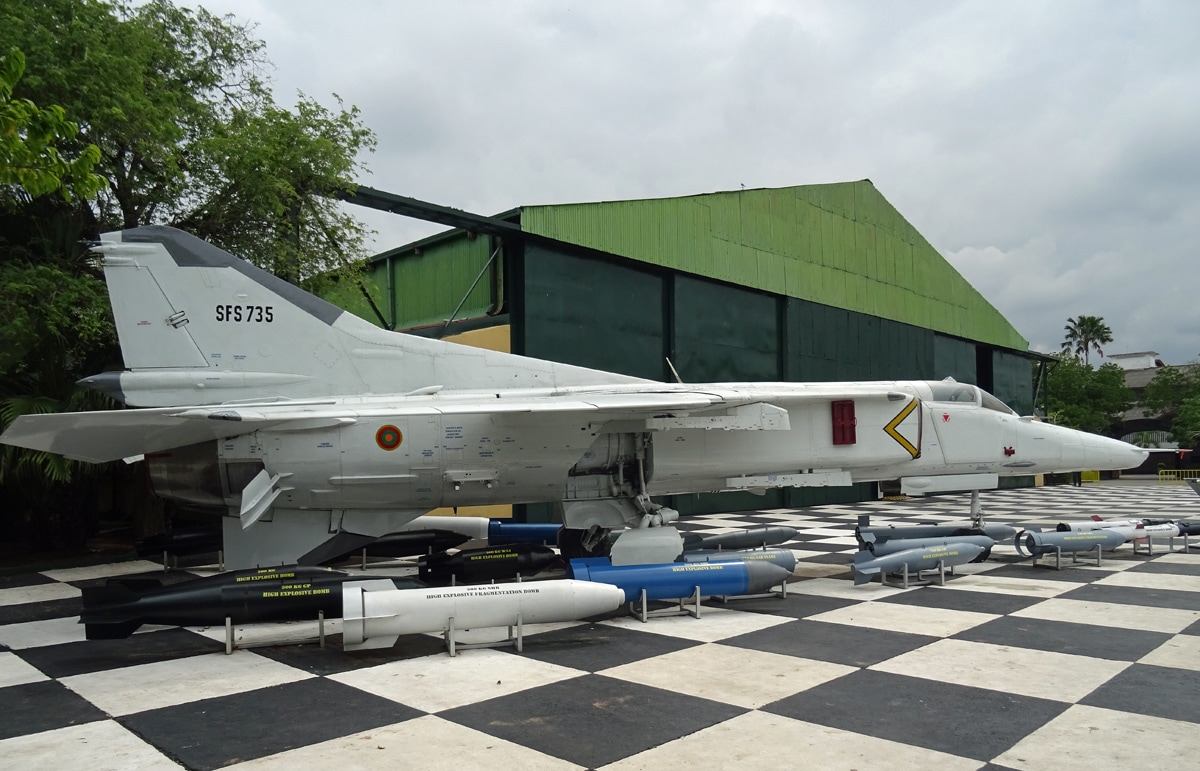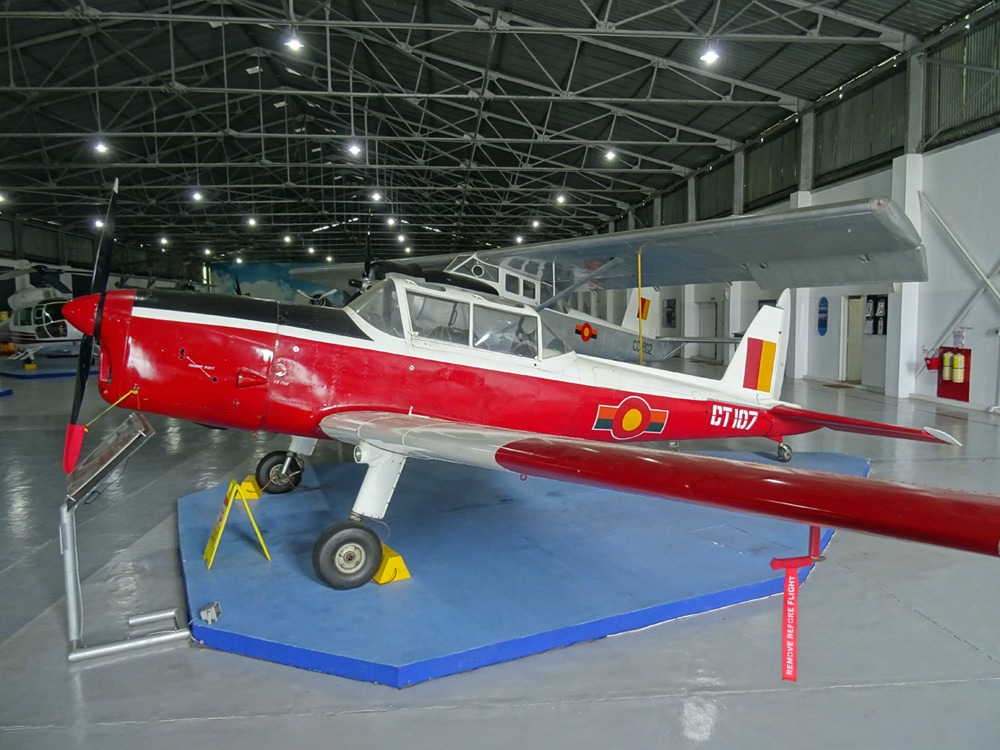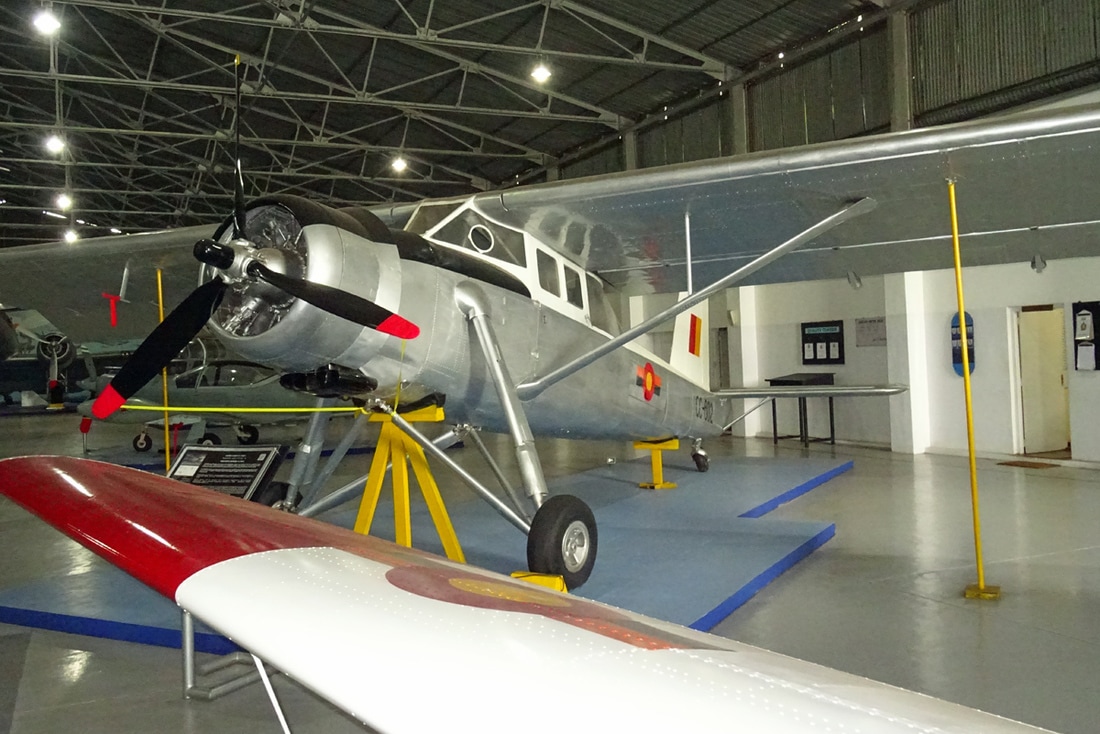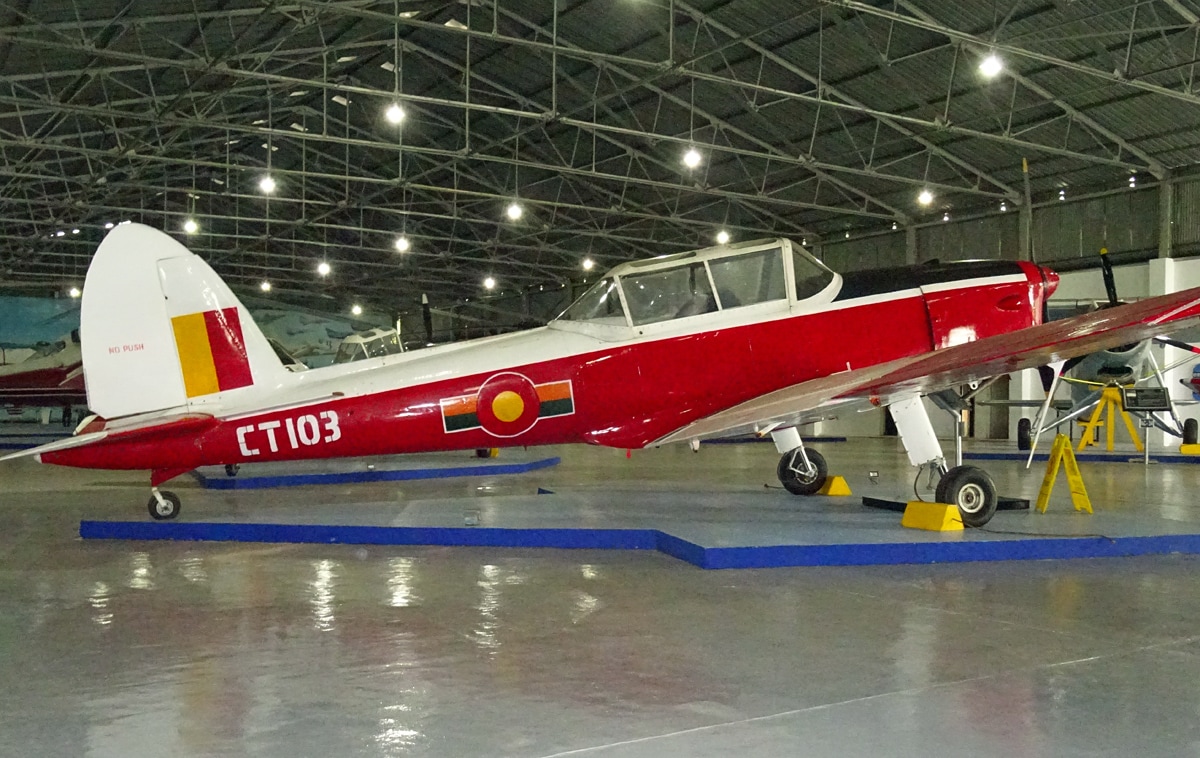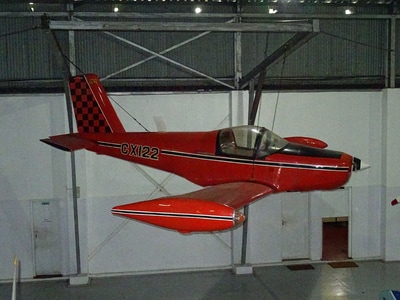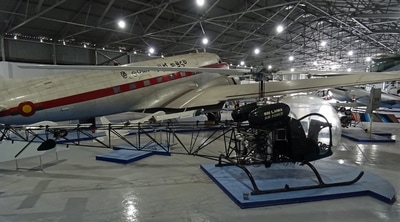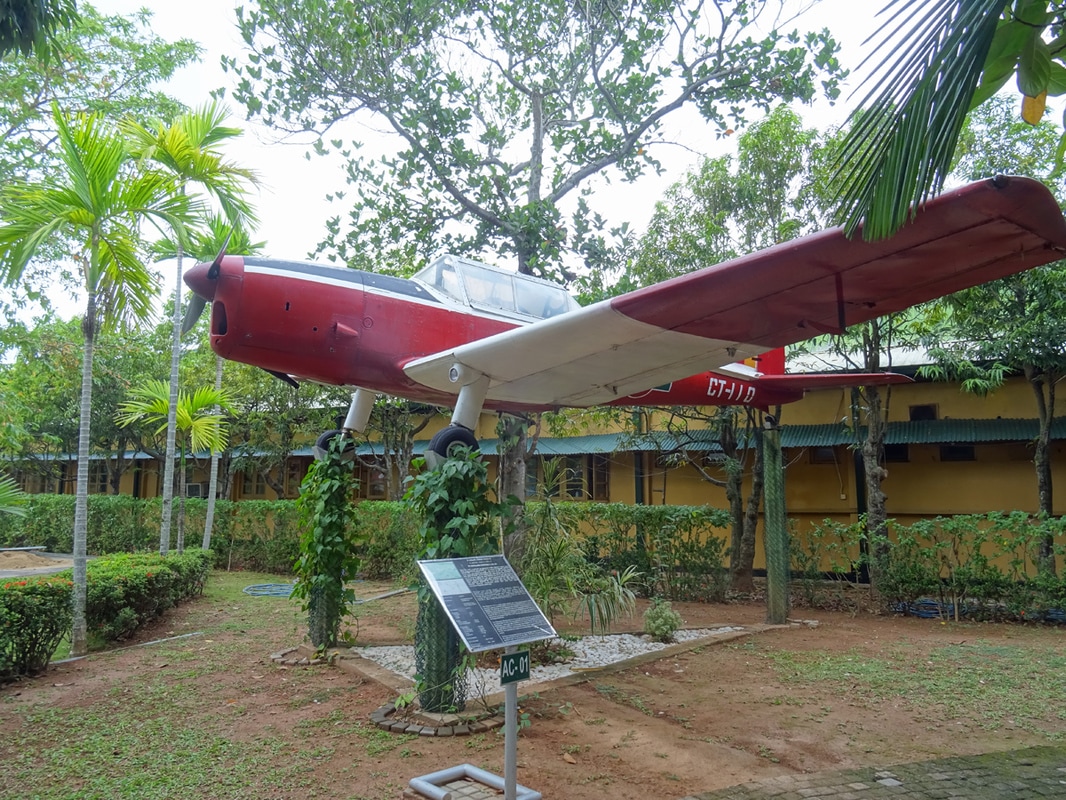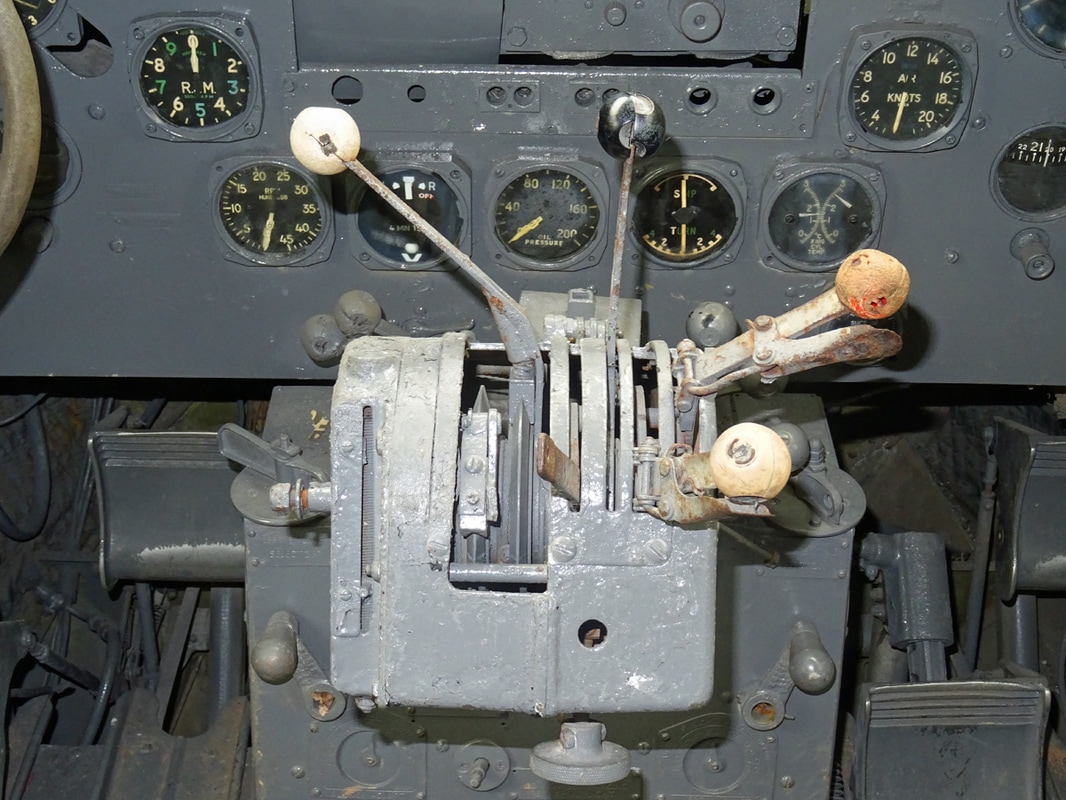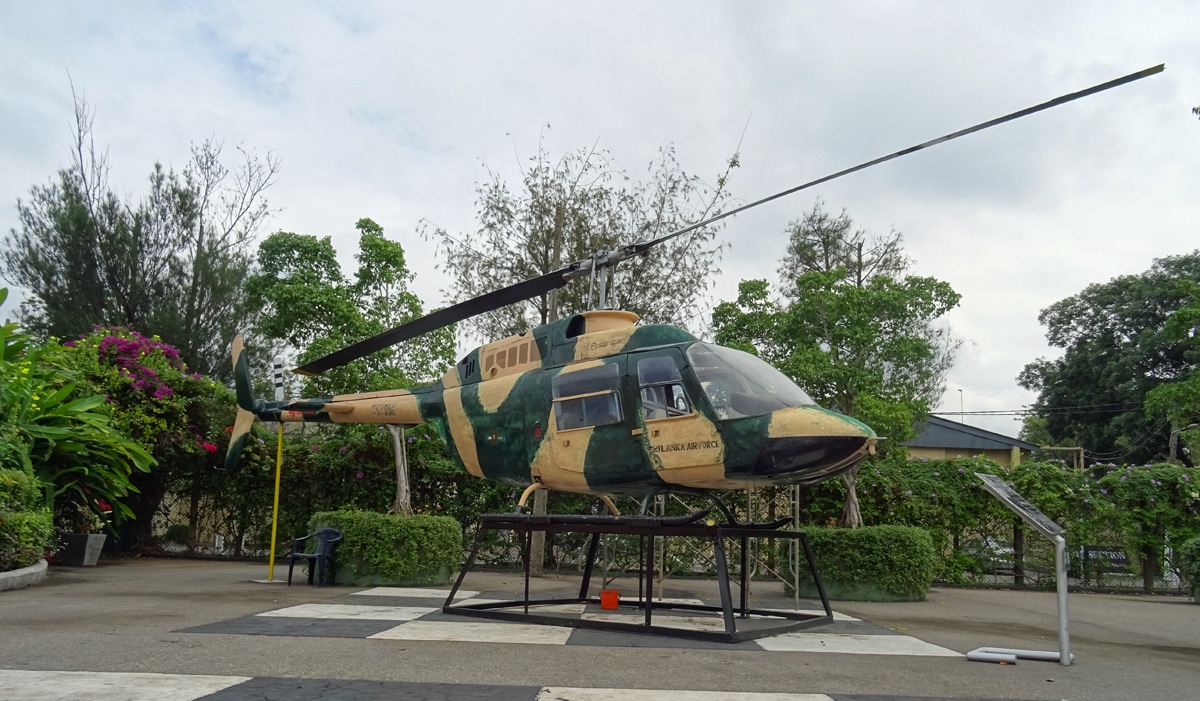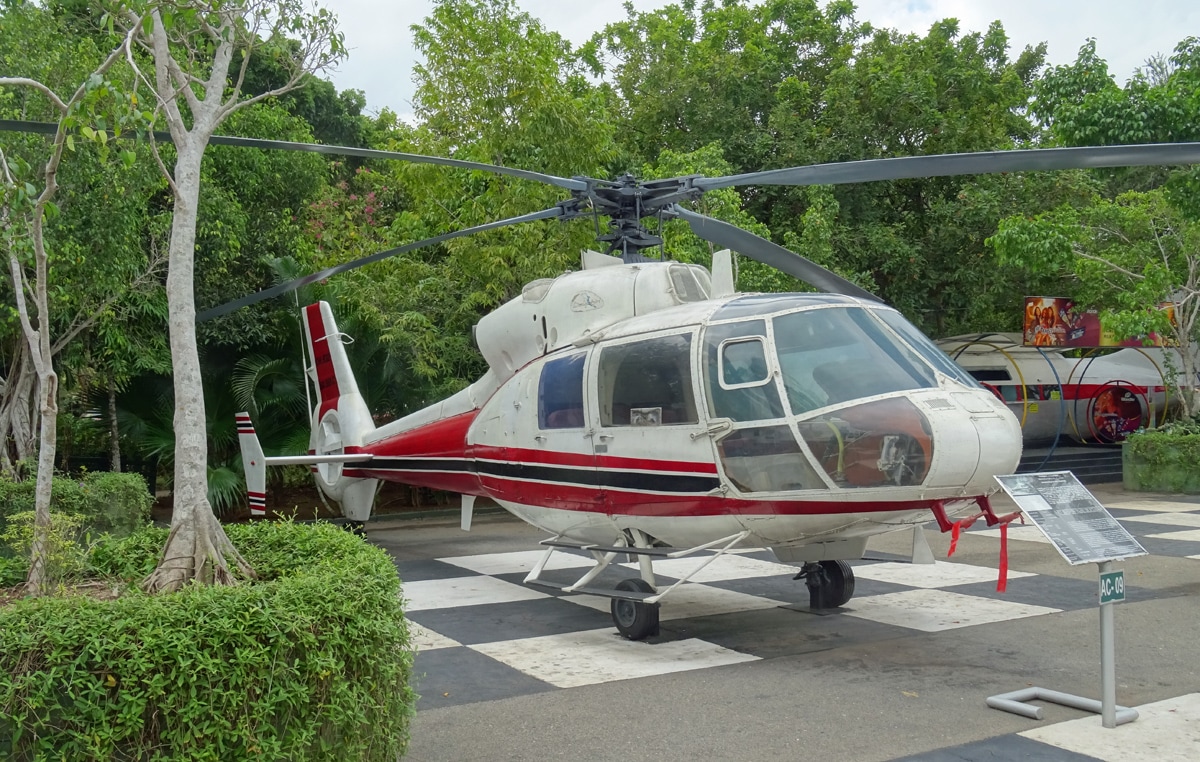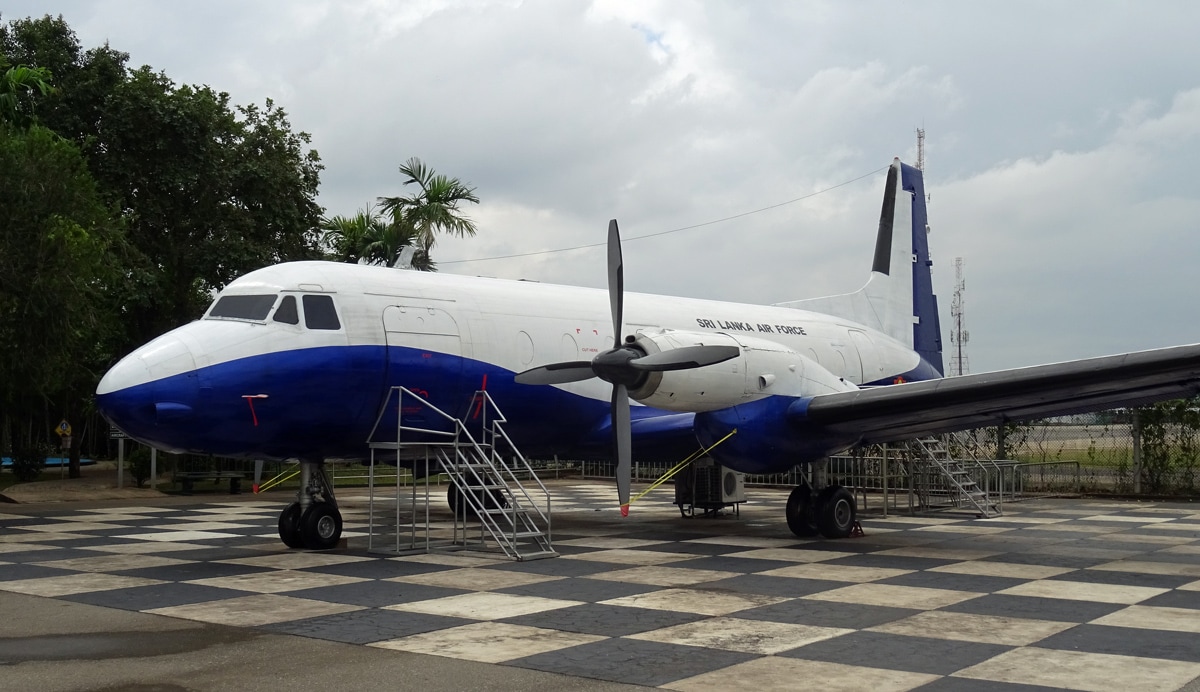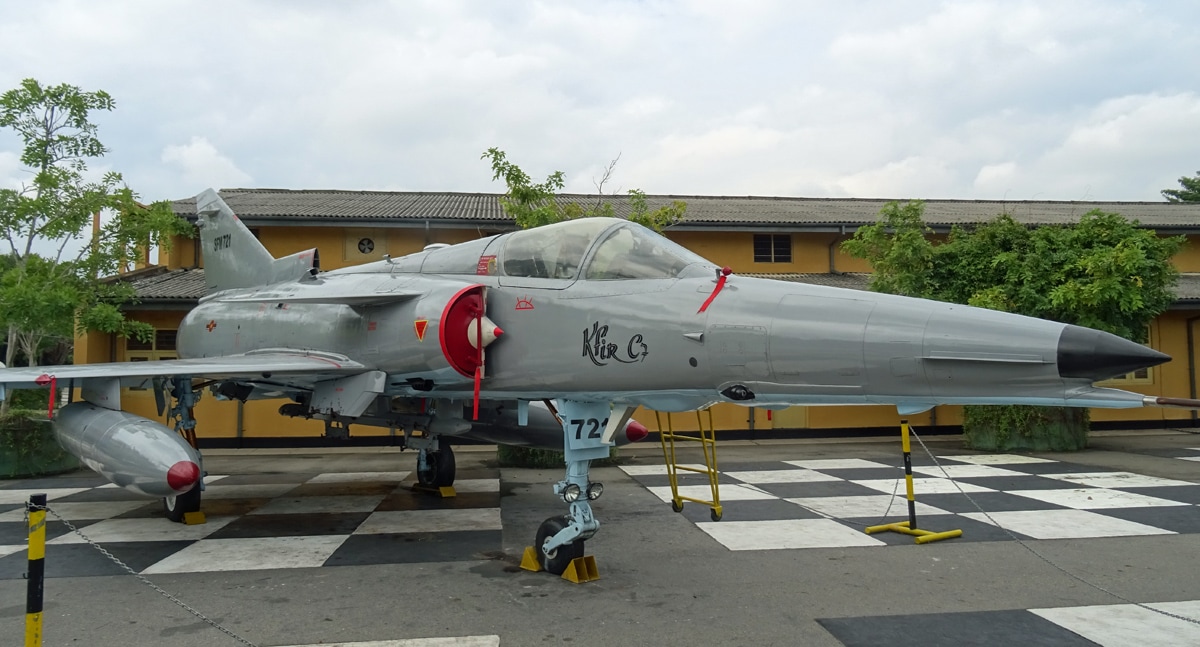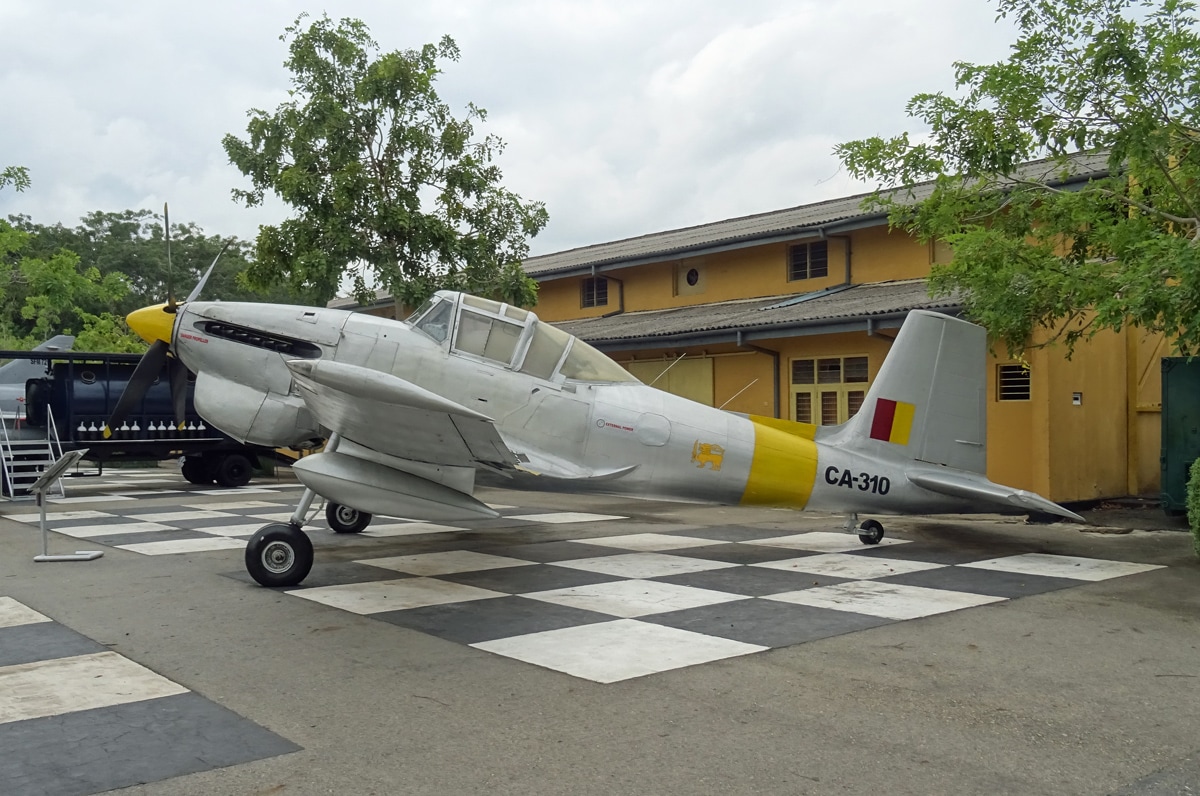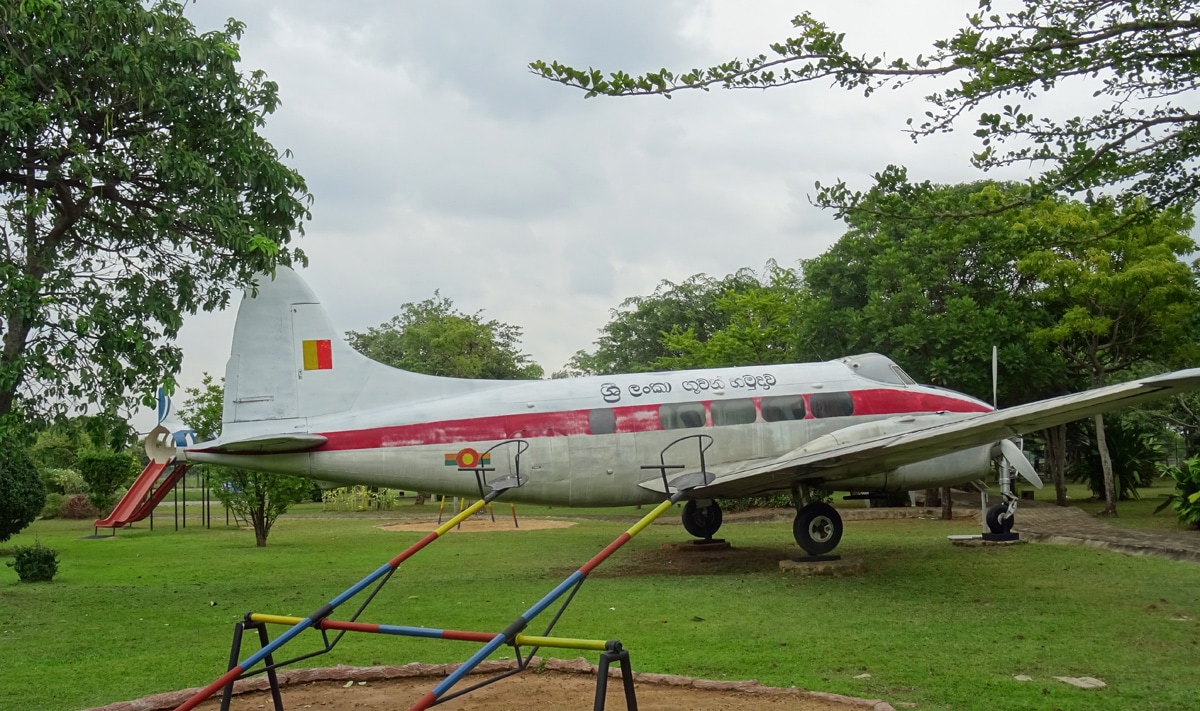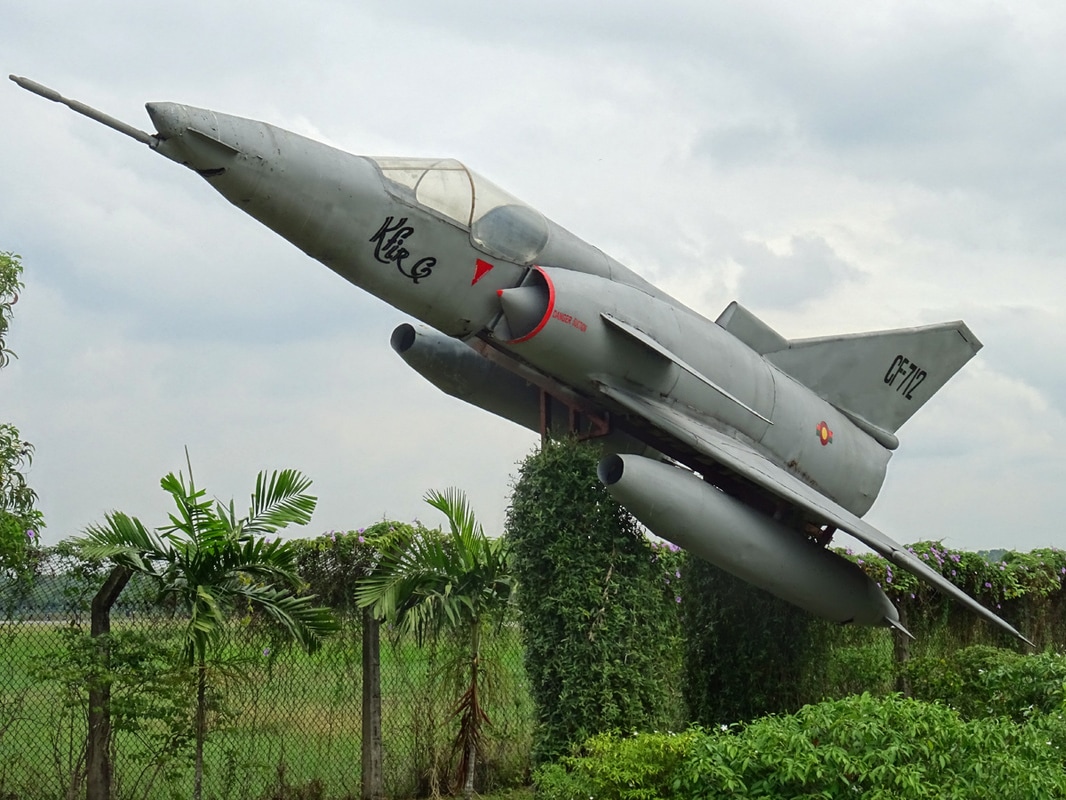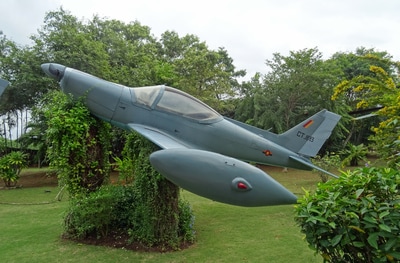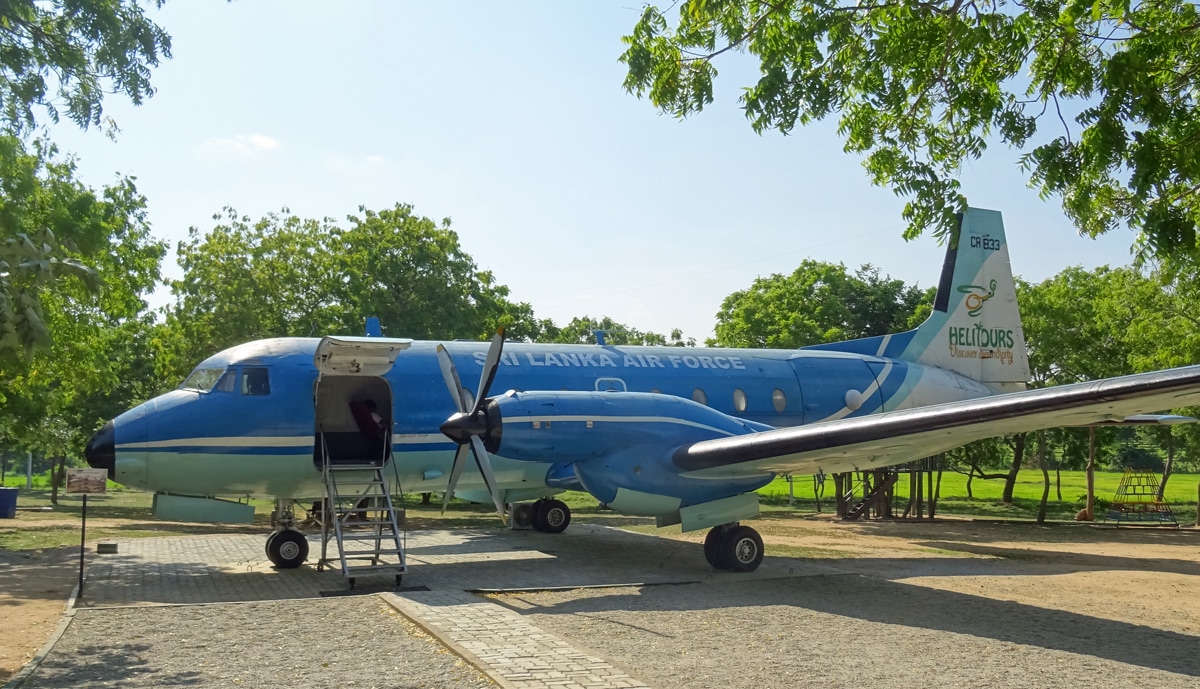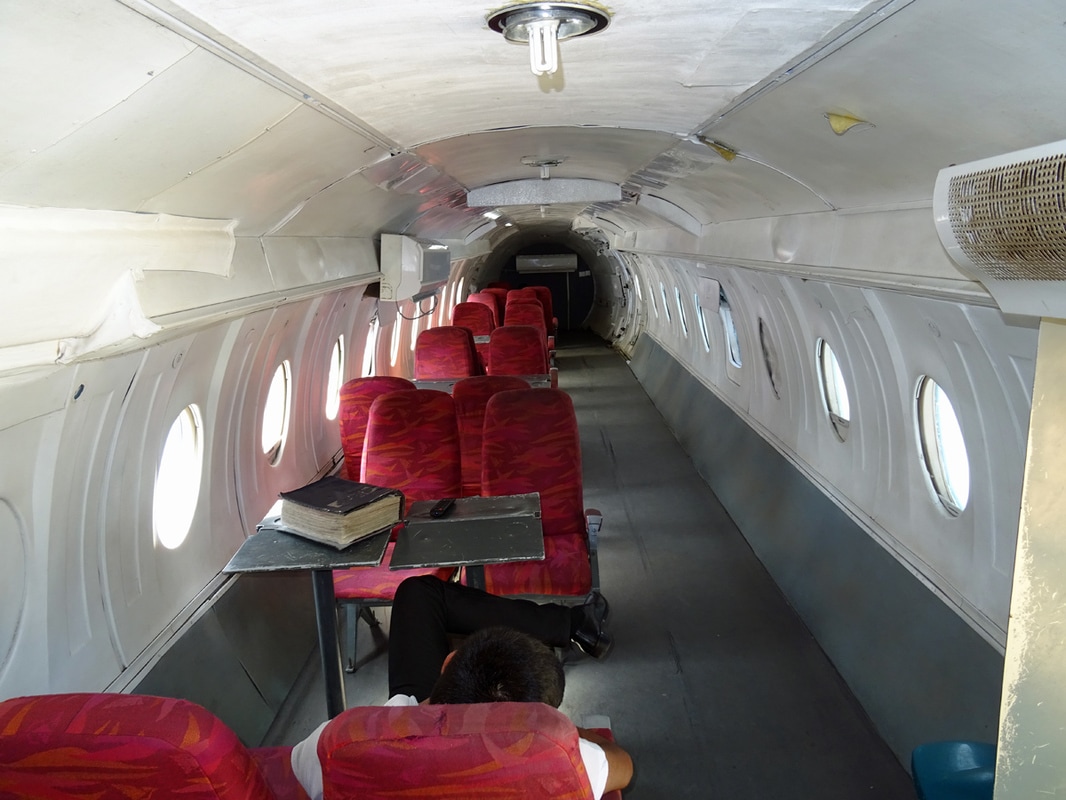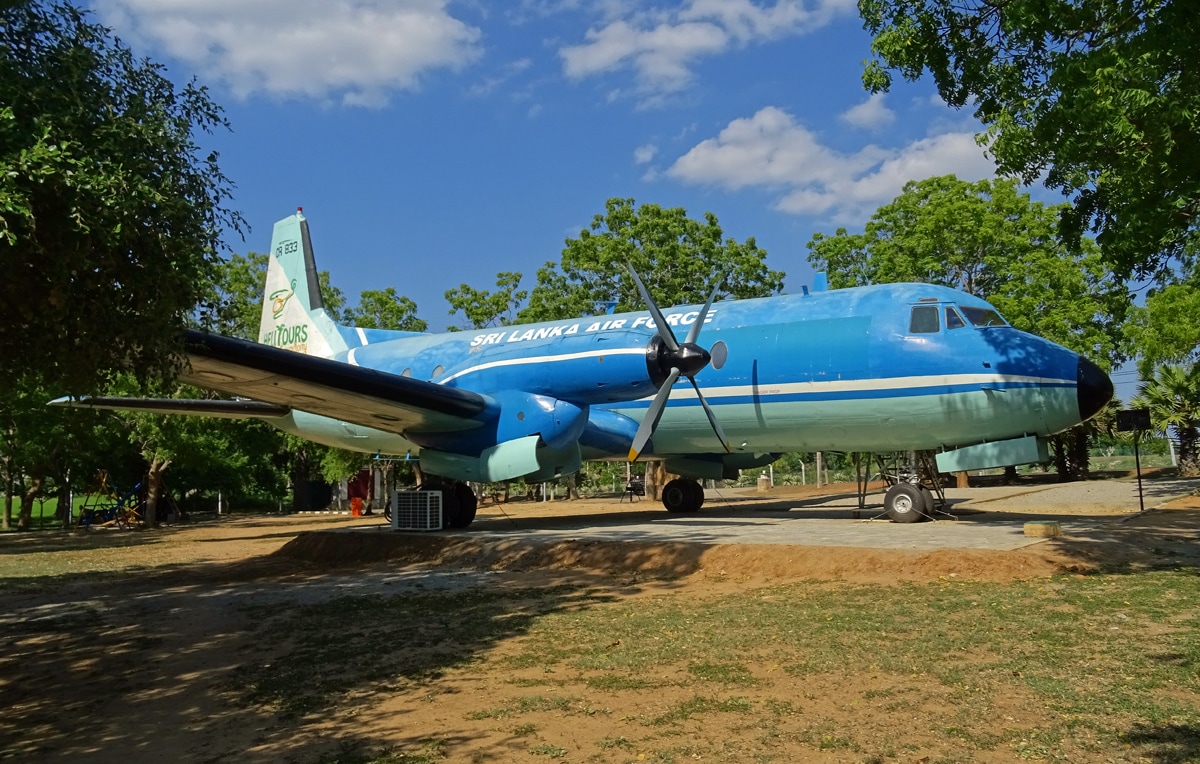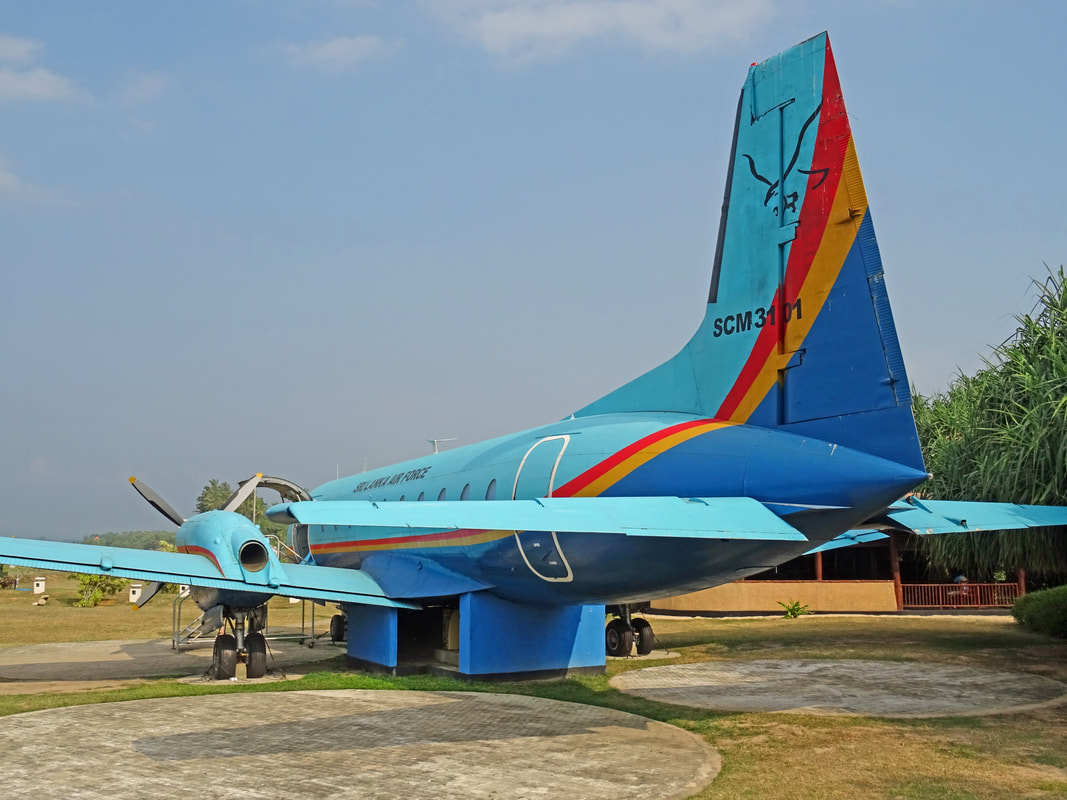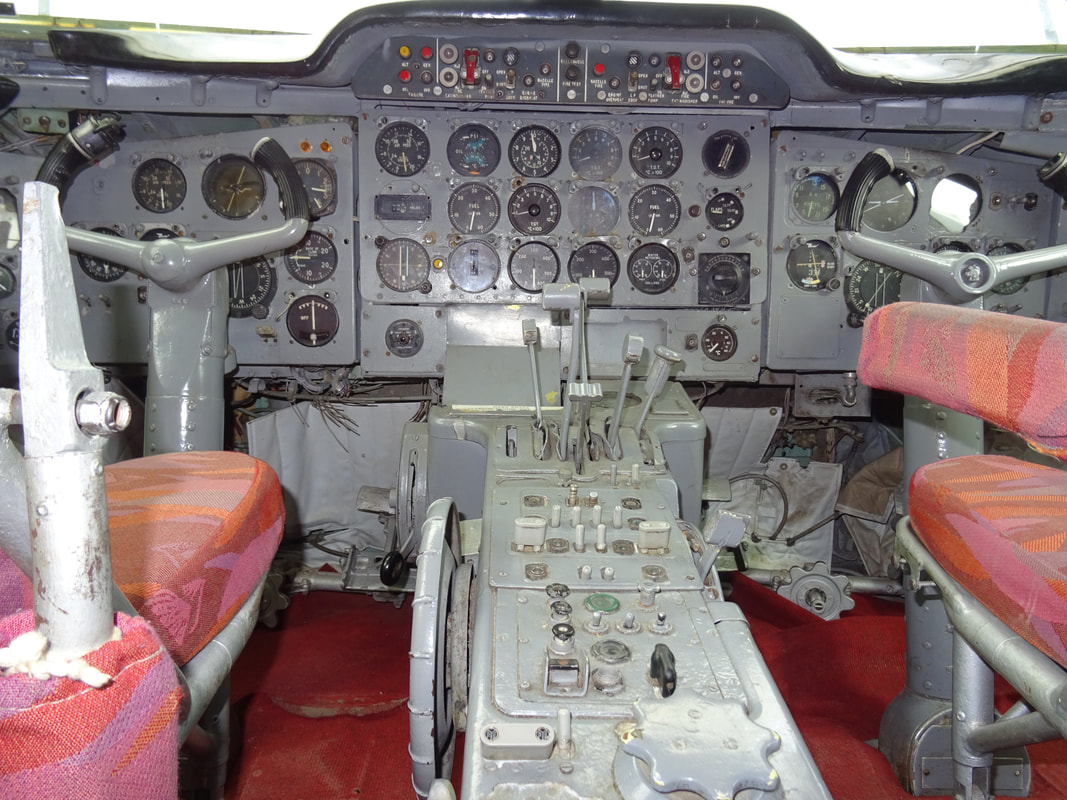Colombo Airport and Ratmalana Air Force museum
Ratmalana Airport is the first International Airport in Sri Lanka. Colombo Airport Ratmalana was the only international airport in Sri Lanka until the inauguration of Bandaranaike International Airport, Katunayake in 1967. This is a Civil Airport which is operating as the domestic aviation hub and the aviation training hub in Sri Lanka. There are several domestic airlines based at Ratmalana with hangar facilities and operating scheduled and charter passenger operations. The aerodrome is also used to train all aviation students in Sri Lanka since 1960s.
From August 2012, Colombo Airport Ratmalana declared to handle international corporate jets to provide more efficient and exclusive passenger experience. Therefore, this airport is currently operate international corporate jets in addition to domestic civil flights and training flights. Though this airport started in the year 1935, at present it is having more pleasant appearance with modernised terminal building with exclusive lounges, all services including customs, immigration and emigration and more professional & friendly staff. Airport & Aviation Services (Sri Lanka) Limited is the airport operator of this airport.
The airport is located 15 km south of the Colombo City.
In 1934 the State Council of Ceylon made a decision to construct an aerodrome within reach of the capital city of Colombo and decided on Ratmalana as the best site. On 27 November 1935 a De Havilland Puss Moth flown by Tyndalle Bisco, Chief flying instructor of the Madras Flying Club, was the first aircraft to land at the new airport.
Second World War
During the Second World War it was used as a Royal Air Force airfield, with No 30 Squadron flying Hawker Hurricanes from there against Japanese Navy aircraft. QEA flew civilianised Consolidated B-24 Liberator and Avro Lancastrian aeroplanes there from Perth, Western Australia, on what was at the time the world's longest non-stop air route. The flight continued after the war with an intermediate re-fuelling stop at the Cocos Islands.
Peak of civilian service
Ratmalana airport at one time had the country's main air terminal, with the Douglas DC-3 Dakota and Lockheed Constellation aeroplanes of Air Ceylon flying out of it. In 1947, KLM flew Douglas DC-4 Skymasters through the airport on the route from the Netherlands to the Dutch East Indies (Indonesia). In the 1950s, BOAC flew Canadair Argonauts (DC4 with Rolls Royce Merlin engines) from Ratmalana to London. On 11 August 1952, 3 months after the inaugural service of a passenger jet aircraft, BOAC began its Comet service between Colombo and London. Later (March 1962 - March 1971) Air Ceylon operated a Comet service on this route to London. The airport was also a Trans World Airlines (TWA) destination for a short time in the 1950s.
Domestic-only era
In 1964, the government decided to build the new Bandaranaike International Airport north of the city, to replace Ratmalana. The new airport was completed in 1967 and Ratmalana handed over all international services to the new airport. Ratmalana was left with the relatively small market for domestic air travel in the country.
Return to international service
In 2012, plans were drawn to relaunch Ratmalana as an international airport, to act as a secondary airport for the city. Ratmalana airport was declared open for small international commercial flights. The airport is available for commercial jet operations from August 2012.
Expansion and upgrade
The airport is only 20 km from the Colombo city centre compared to the larger Bandaranaike International Airport which is 32 km north of the city. The airport aims to attract private international flights and Low-cost airlines. Helitours, an airline operated by the Sri Lankan Airforce is based at the airport. There are a few industrial facilities such as the Bata shoe factory within a close proximity of the airport. The Government is developing the Ratmalana airport into an international city airport, which would provide services to private jets and small aircraft.
From August 2012, Colombo Airport Ratmalana declared to handle international corporate jets to provide more efficient and exclusive passenger experience. Therefore, this airport is currently operate international corporate jets in addition to domestic civil flights and training flights. Though this airport started in the year 1935, at present it is having more pleasant appearance with modernised terminal building with exclusive lounges, all services including customs, immigration and emigration and more professional & friendly staff. Airport & Aviation Services (Sri Lanka) Limited is the airport operator of this airport.
The airport is located 15 km south of the Colombo City.
In 1934 the State Council of Ceylon made a decision to construct an aerodrome within reach of the capital city of Colombo and decided on Ratmalana as the best site. On 27 November 1935 a De Havilland Puss Moth flown by Tyndalle Bisco, Chief flying instructor of the Madras Flying Club, was the first aircraft to land at the new airport.
Second World War
During the Second World War it was used as a Royal Air Force airfield, with No 30 Squadron flying Hawker Hurricanes from there against Japanese Navy aircraft. QEA flew civilianised Consolidated B-24 Liberator and Avro Lancastrian aeroplanes there from Perth, Western Australia, on what was at the time the world's longest non-stop air route. The flight continued after the war with an intermediate re-fuelling stop at the Cocos Islands.
Peak of civilian service
Ratmalana airport at one time had the country's main air terminal, with the Douglas DC-3 Dakota and Lockheed Constellation aeroplanes of Air Ceylon flying out of it. In 1947, KLM flew Douglas DC-4 Skymasters through the airport on the route from the Netherlands to the Dutch East Indies (Indonesia). In the 1950s, BOAC flew Canadair Argonauts (DC4 with Rolls Royce Merlin engines) from Ratmalana to London. On 11 August 1952, 3 months after the inaugural service of a passenger jet aircraft, BOAC began its Comet service between Colombo and London. Later (March 1962 - March 1971) Air Ceylon operated a Comet service on this route to London. The airport was also a Trans World Airlines (TWA) destination for a short time in the 1950s.
Domestic-only era
In 1964, the government decided to build the new Bandaranaike International Airport north of the city, to replace Ratmalana. The new airport was completed in 1967 and Ratmalana handed over all international services to the new airport. Ratmalana was left with the relatively small market for domestic air travel in the country.
Return to international service
In 2012, plans were drawn to relaunch Ratmalana as an international airport, to act as a secondary airport for the city. Ratmalana airport was declared open for small international commercial flights. The airport is available for commercial jet operations from August 2012.
Expansion and upgrade
The airport is only 20 km from the Colombo city centre compared to the larger Bandaranaike International Airport which is 32 km north of the city. The airport aims to attract private international flights and Low-cost airlines. Helitours, an airline operated by the Sri Lankan Airforce is based at the airport. There are a few industrial facilities such as the Bata shoe factory within a close proximity of the airport. The Government is developing the Ratmalana airport into an international city airport, which would provide services to private jets and small aircraft.
|
A Cessna Titan II on display in front of the terminal. It is 4R-SEA. A 1981 build Cessna 404 Titan II with c/n. 404-0833 (ex N404AM/VQ-TRB). It was brought to Lanka by 'Nathan from Florida' a director of Aero Lanka, but both engines were time expired and also there were many items that needed inspection and replacement, so it became uneconomical to get it airworthy. They donated it to the airport.
|
Fokker F-27-500 Friendship 4R-EXK of ExpoAir
|
The Cessna Model 404 Titan is an American twin-engined, propeller-driven light aircraft built by Cessna Aircraft. It was that company's largest twin piston-engined aircraft at the time of its development in the 1970s.
The Cessna 404 was a development of the Cessna 402 with an enlarged vertical tail and other changes. The prototype first flew on 26 February 1975. It is powered by two 375 hp/280 kW turbocharged Continental Motors GTSIO-520 piston engines. Two versions were offered originally; the Titan Ambassador passenger aircraft for ten passengers, and the Titan Courier utility aircraft for passengers or cargo. By early 1982 seven different variants were available, including a pure cargo version, the Titan Freighter. The Freighter was fitted with a strengthened floor, cargo doors, and its interior walls and ceiling were made from impact-resistant polycarbonate materials to minimize damage in the event of cargo breaking free in-flight. |
Because of a shortage of funds for military expenditure in the wake of the 1971 uprising, the No. 4 Helicopter Squadron began operating commercial transport services for foreign tourists under the name of Helitours.
Sri Lanka Air Force Museum is Sri Lanka's only national museum dedicated to the field of aviation as well as the history of the Sri Lanka Air Force (S.L.A.F.).
A visit to this establishment is sure to be a unique experience for aviation enthusiast of all ages. The museum offers a unique insight not only into the history of the S.L.A.F. but also a comprehensive picture of aviation in general including the basics of aviation technology.
Starting from the Royal Air Force (R.A.F.) operations during World War II to the combat operations of the S.L.A.F. in the recent past, the museum offers a detailed depiction of the evolution which has shaped the S.L.A.F. into the highly successful fighting force it is today.
The museum was first established as a fully fledged formation in 1993 as the Aircraft Preservation and Storage Unit at Air Force Base Ratmalana with the intention of preserving the history of aviation in Sri Lanka in general and the history of S.L.A.F. in particular. Further being located within an operational air base gives the museum a novel real life appeal.
A visit to this establishment is sure to be a unique experience for aviation enthusiast of all ages. The museum offers a unique insight not only into the history of the S.L.A.F. but also a comprehensive picture of aviation in general including the basics of aviation technology.
Starting from the Royal Air Force (R.A.F.) operations during World War II to the combat operations of the S.L.A.F. in the recent past, the museum offers a detailed depiction of the evolution which has shaped the S.L.A.F. into the highly successful fighting force it is today.
The museum was first established as a fully fledged formation in 1993 as the Aircraft Preservation and Storage Unit at Air Force Base Ratmalana with the intention of preserving the history of aviation in Sri Lanka in general and the history of S.L.A.F. in particular. Further being located within an operational air base gives the museum a novel real life appeal.
Shenyang FT-5's SFT-1301 and SFT-1302
In order to increase its attack capability, the SLAF acquired four F-7 Skybolts, three FT-7s and two Shenyang J-5s from China in 1991.
Behind the FT-5 and the green lush are the remains of a An-32B.
A DH Chipmunk without any marks
The de Havilland Canada DHC-1 Chipmunk is a tandem, two-seat, single-engined primary trainer aircraft which was the standard primary trainer for the Royal Canadian Air Force, Royal Air Force and several other air forces through much of the post-Second World War years. The de Havilland Chipmunk was the first postwar aviation project of de Havilland Canada.
Percy Mahendra "Mahinda" Rajapaksa, born 18 November 1945 is a Sri Lankan politician who served as the sixth President of Sri Lanka from 19 November 2005 to 9 January 2015.
Nanchang PT-6 CT-130
The Nanchang CJ-6 is an aircraft designed and built in China for use by the People's Liberation Army Air Force (PLAAF) as a basic trainer.
Antonov An-32B CR-867
I spotted the flowing Mil-8's; SMH-4420, SMH-4421, SMH-4422 and SMH-4427. I could not read the registration of the camo Mil
The An-32 is essentially a re-engined An-26. The launch customer was the Indian Air Force, which ordered the aircraft partly due to good relations between then USSR leader Leonid Brezhnev and then India leader Indira Gandhi. The An-32 is designed to withstand adverse weather conditions better than the standard An-26. The high placement of the engine nacelles above the wing allowed for larger diameter propellers, which are driven by 5,100 hp rated Ivchenko AI-20 turboprop engines, providing almost twice the power of the An-26's AI-24 powerplants.
Mig-27 SFS-735
The Mikoyan MiG-27 NATO reporting name "Flogger-D/J" is a variable-geometry ground-attack aircraft, originally built by the Mikoyan design bureau in the Soviet Union and later license-produced in India by Hindustan Aeronautics as the Bahadur ("Valiant"). It is based on the Mikoyan-Gurevich MiG-23 fighter aircraft, but optimized for air-to-ground attack. Unlike the MiG-23, the MiG-27 did not see widespread use outside Russia, as most countries opted for the MiG-23BN and Sukhoi Su-22 instead. It remains in service with the Indian, Kazakh and Sri Lankan Air Forces in the ground attack role. All Russian and Ukrainian MiG-27s have been retired.
In 2000 new aircraft were acquired; apart from the addition of Kfir C.7s and Mi-35s, these included six Mikoyan MiG-27 dedicated ground attack aircraft.
DH DH82 A Tigermoth CX-123 SLAF
The de Havilland DH.82 Tiger Moth is a 1930s biplane designed by Geoffrey de Havilland and built by the de Havilland Aircraft Company. It was operated by the Royal Air Force (RAF) and many other operators as a primary trainer aircraft. In addition to the type's principal use for ab-initio training, the Second World War saw RAF Tiger Moth operating in other capacities, including maritime surveillance, defensive anti-invasion preparations, and even some aircraft that had been outfitted to function as armed light bombers.
The Tiger Moth remained in service with the RAF until it was succeeded and replaced by the de Havilland Chipmunk during the early 1950s. Many of the military surplus aircraft subsequently entered into civil operation. Many nations have used the Tiger Moth in both military and civil applications, and it remains in widespread use as a recreational aircraft in several different countries. It is still occasionally used as a primary training aircraft, particularly for those pilots wanting to gain experience before moving on to other tailwheel aircraft. Many Tiger Moths are now employed by various companies offering trial lesson experiences. The de Havilland Moth club, founded 1975, is now an owners' association offering a mutual club and technical support.
The Tiger Moth remained in service with the RAF until it was succeeded and replaced by the de Havilland Chipmunk during the early 1950s. Many of the military surplus aircraft subsequently entered into civil operation. Many nations have used the Tiger Moth in both military and civil applications, and it remains in widespread use as a recreational aircraft in several different countries. It is still occasionally used as a primary training aircraft, particularly for those pilots wanting to gain experience before moving on to other tailwheel aircraft. Many Tiger Moths are now employed by various companies offering trial lesson experiences. The de Havilland Moth club, founded 1975, is now an owners' association offering a mutual club and technical support.
DH DHC-1 Chipmunk CT-107 SLAF
Scottish Aviation Pioneer CC-602 SLAF
The Scottish Aviation Pioneer was an STOL aircraft manufactured by Scottish Aviation in Scotland. It was used for casualty evacuation and communications and could accommodate a pilot and up to four passengers.
Royal Ceylon Air Force - (six aircraft, originally ordered for the RAF but diverted whilst under construction to fulfil the Royal Ceylon Air Force order)
DH DHC-1 Chipmunk CT-103 SLAF
DH DHC-1 Chipmunk CT-102 SLAF
Sud SA365C Dauphin CH-531 SLAF
Boulton Paul Balliol T.2 CA-302 SLAF
The Boulton Paul Balliol and Sea Balliol were monoplane military advanced trainer aircraft built for the Royal Air Force (RAF) and the Royal Navy Fleet Air Arm (FAA) by Boulton Paul Aircraft. Developed in the late 1940s the Balliol was designed to replace the North American Harvard trainer and used the Rolls-Royce Merlin engine, with the Sea Balliol a naval version for deck landing training.
Siai Marchetti 260 CT-123 SLAF
The SIAI-Marchetti SF.260 is an Italian light aircraft marketed as an aerobatics and military trainer. It was designed by Stelio Frati, originally for Aviamilano, which flew the first prototype of it (then designated F.260) on July 15, 1964. Actual production was undertaken when SIAI Marchetti purchased the design soon thereafter and continued with this firm until the company was bought by Aermacchi in 1997. The military versions are popular with smaller air forces, which can also arm it for use in the close-support role.
Westland Dragonfly CH-501 SLAF
The Westland WS-51 Dragonfly helicopter was built by Westland Aircraft and was a license-built version of the American Sikorsky S-51.
In December 1946 an agreement was signed between Westland Aircraft and Sikorsky to allow a British version of the S-51 to be manufactured under license in the United Kingdom. These would be powered by the 500 hp Alvis Leonides radial engine. A modified version was also developed by Westland as the Westland Widgeon, but it was commercially unsuccessful.
The Dragonfly entered service with the Royal Navy in 1950 in the air-sea rescue role. A number were also used by the Royal Air Force for casualty evacuation. It was replaced in British service by the Westland Whirlwind, another derivative of a Sikorsky design, in the late 1950s.
In December 1946 an agreement was signed between Westland Aircraft and Sikorsky to allow a British version of the S-51 to be manufactured under license in the United Kingdom. These would be powered by the 500 hp Alvis Leonides radial engine. A modified version was also developed by Westland as the Westland Widgeon, but it was commercially unsuccessful.
The Dragonfly entered service with the Royal Navy in 1950 in the air-sea rescue role. A number were also used by the Royal Air Force for casualty evacuation. It was replaced in British service by the Westland Whirlwind, another derivative of a Sikorsky design, in the late 1950s.
Douglas C-47B Dakota IV CR-821 of the SLAF is on display in the hangar of Ratmalana Air Force base museum, Colombo, Sri Lanka
Originally this DC-3 has been manufactured in 1944 as a C-47B-1-DL. In August 1944 she has been transferred from the USAAF to the RAF in India and registrated KG787. When her military career was over, her civilian life started as VP-CAS for Air Ceylon. Re-registrated 4R-ACG in the mid 1950s. During 1978 she was transfered to the SLAF as CR-821 and used on social services as well as military duties.
Auster J-1 Autocrat VP-CAO, Pazmamy PL2 CX-122 SLAF, Bell 47G CH-580 SLAF and SIAI Marchetti SF.260 CT-127
The Royal Ceylon Air Force first went into combat in 1971 when the Marxist JVP launched an island-wide insurrection on April 5. The Ceylon Armed Forces were caught off guard; police stations island-wide and the RCyAF base at Ekala were attacked in the initial wave. Responding rapidly the RCyAF deployed its limited aircraft, at first to resupply besieged police stations and military outposts and patrol around major cities. Six Bell 47G helicopters purchased from the United States, which were put into combat as soon as possible after only five days of pilot training. Air Force personnel joined in ground operations, and when the insurgents surrendered after about a month's fighting the RCyAF was in charge of three of the many rehabilitation camps setup for insurgents.
DH DHC-1 Chipmunk CT-110 SLAF
Kamov Ka26 CH-525 SLAF
The Royal Ceylon Air Force first went into combat in 1971 when the Marxist JVP launched an island-wide insurrection on April 5. The Ceylon Armed Forces were caught off guard; police stations island-wide and the RCyAF base at Ekala were attacked in the initial wave.
During this insurgency the left-leaning Bandaranaike government turned to the Soviet Union for more sophisticated weaponry, and received five Mikoyan-Gurevich MiG-17F fighter bombers and a MiG-15 UTI trainer, as well as two Kamov Ka-26 helicopters meant for search and rescue and casualty evacuation.
During this insurgency the left-leaning Bandaranaike government turned to the Soviet Union for more sophisticated weaponry, and received five Mikoyan-Gurevich MiG-17F fighter bombers and a MiG-15 UTI trainer, as well as two Kamov Ka-26 helicopters meant for search and rescue and casualty evacuation.
SIAI Marchetti SF.260 CT-128
Six SF.260TPs were delivered to the Sri Lanka Air Force (SLAF) in 1985, to be used in the pilot training role, although they were later brought into the government's effort to subdue the Tamil Tigers. Two former factory demonstration aircraft were delivered in 1986 to replace lost aircraft, added by three new built aircraft in 1988. All SF.260 aircraft are based with No. 1 Flying Training Wing on the airbase SLAF Anuradhapura. The SF.260TP fleet was expanded in 1990-91 with the delivery of twelve former Myanmar SF.260Ws. The SF.260W fleet was withdrawn from use in 2001, being replaced by Chinese Nanchang PT-6 aircraft. The SF.260TP fleet was also retired a few years later.
2 aircraft were lost in combat:
13 September 1990: A SLAF SF.260TP was shot down near Palay. The pilot was killed.
14 July 1992: A SLAF SF.260TP was shot down by Tamil Tigers; the pilot was killed.
2 aircraft were lost in combat:
13 September 1990: A SLAF SF.260TP was shot down near Palay. The pilot was killed.
14 July 1992: A SLAF SF.260TP was shot down by Tamil Tigers; the pilot was killed.
Mig 15 UTI CF-901 SLAF
The Royal Ceylon Air Force first went into combat in 1971 when the Marxist JVP launched an island-wide insurrection on April 5. The Ceylon Armed Forces were caught off guard; police stations island-wide and the RCyAF base at Ekala were attacked in the initial wave.
During this insurgency the left-leaning Bandaranaike government turned to the Soviet Union for more sophisticated weaponry, and received five Mikoyan-Gurevich MiG-17F fighter bombers and a MiG-15 UTI trainer, as well as two Kamov Ka-26 helicopters meant for search and rescue and casualty evacuation.
During this insurgency the left-leaning Bandaranaike government turned to the Soviet Union for more sophisticated weaponry, and received five Mikoyan-Gurevich MiG-17F fighter bombers and a MiG-15 UTI trainer, as well as two Kamov Ka-26 helicopters meant for search and rescue and casualty evacuation.
DH Dove CS-404 SLAF
The de Havilland DH.104 Dove was a British short-haul airliner developed and manufactured by de Havilland. It was a monoplane successor to the prewar de Havilland Dragon Rapide biplane. The design came about from the Brabazon Committee report which, amongst other aircraft types, called for a British-designed short-haul feeder for airlines.
The Dove was a popular aircraft and is considered to be one of Britain's most successful postwar civil designs, in excess of 500 aircraft being manufactured between 1946 and 1967. Several military variants were operated, such as the Devon by the Royal Air Force, the Sea Devon by the Royal Navy and the type also saw service with a number of overseas military forces.
A longer four-engined development of the Dove, intended for use in the less developed areas of the world, was the de Havilland Heron. A considerably re-designed three-engined variant of the Dove was built in Australia as the de Havilland Australia DHA-3 Drover.
The Dove was a popular aircraft and is considered to be one of Britain's most successful postwar civil designs, in excess of 500 aircraft being manufactured between 1946 and 1967. Several military variants were operated, such as the Devon by the Royal Air Force, the Sea Devon by the Royal Navy and the type also saw service with a number of overseas military forces.
A longer four-engined development of the Dove, intended for use in the less developed areas of the world, was the de Havilland Heron. A considerably re-designed three-engined variant of the Dove was built in Australia as the de Havilland Australia DHA-3 Drover.
Cessna 337 Skymaster CC-660 SLAF
After the 1983 riots, the government worked rapidly to expand the SLAF inventory. Because of tight budget constraints, the SLAF was compelled to refit a number of non-combat aircraft for military uses in counter-terrorism operations against Liberation Tigers of Tamil Eelam (LTTE) terrorists. From the mid 80's, the Air Force acquired two Cessna 337s.
Douglas C-47B Dakota IV CR-822 of the SLAF is on display at Ratmalana Air Force base museum, Colombo, Sri Lanka
This DC-3 has been manufactured in 1945 and started military duties for the RAF in India and was registrated KP254. When her military career was over, her civilian life started as G-AMJY for British European Airways in 1951. In 1959 she was sold to Air Ceylon and registrated 4R-ACI. During 1978 she was transfered to the SLAF as CR-821 and used on social services as well as military duties.
This DC-3 once flew for British European Airways!
Mig-17 CF-905
The Royal Ceylon Air Force first went into combat in 1971 when the Marxist JVP launched an island-wide insurrection on April 5. The Ceylon Armed Forces were caught off guard; police stations island-wide and the RCyAF base at Ekala were attacked in the initial wave.
During this insurgency the left-leaning Bandaranaike government turned to the Soviet Union for more sophisticated weaponry, and received five Mikoyan-Gurevich MiG-17F fighter bombers and a MiG-15 UTI trainer, as well as two Kamov Ka-26 helicopters meant for search and rescue and casualty evacuation.
During this insurgency the left-leaning Bandaranaike government turned to the Soviet Union for more sophisticated weaponry, and received five Mikoyan-Gurevich MiG-17F fighter bombers and a MiG-15 UTI trainer, as well as two Kamov Ka-26 helicopters meant for search and rescue and casualty evacuation.
Percival Jet Provost T.51 CJ-704 SLAF was damaged on take-off Katunayake AFB on February 01, 1960!
By the early 1980s the Provosts had been taken out of active service and placed in long-term storage, leaving the air force without any fighter/bomber capability.
Beechcraft E18 CS-450 of the SLAF is on display at the interesting Rathmalana Air Force base museum, Colombo, Sri Lanka. The Twin-Beech did operate a short period in service for the SLAF but keeping the Beech operational seemed to difficult and she was stored.
Jan. 2017
Jan. 2017
With construction number BA-433 this twin beech was delivered during July to Ceylon Survey Department. She was fitted with photographic survey equipments (see the under fuselage) and operated until the late 70's as 4R-AAU. She was stored in March 1980 at Colombo-Ratmalana. She was transfered to the SLAF as CS-450 in probably 1982. The Beech was operated by the Government Survey Department during 1982/1983. Later on she was transfered to the No. 2 Training Wing until 1989. She is with the museum since 1994.
Bell JetRanger 206A SFS-550
The Bell 206 is a family of two-bladed, single- or twin-engined helicopters, manufactured by Bell Helicopter at its Mirabel, Quebec plant. Originally developed as the Bell YOH-4 for the United States Army's Light Observation Helicopter program, it was not selected by the Army. Bell redesigned the airframe and successfully marketed the aircraft commercially as the five-place Bell 206A JetRanger. The new design was eventually selected by the Army as the OH-58 Kiowa.
Percival Jet Provost T.51 CJ-701 SLAF
The Royal Ceylon Air Force first went into combat in 1971 when the Marxist JVP launched an island-wide insurrection on April 5. The Ceylon Armed Forces were caught off guard; police stations island-wide and the RCyAF base at Ekala were attacked in the initial wave. Responding rapidly the RCyAF deployed its limited aircraft, at first to resupply besieged police stations and military outposts and patrol around major cities. The Jet Provosts were taken out of storage and put into service within three days, carrying out attacks on insurgents.
Cessna 337 Skymaster CC-656 SLAF
After the 1983 riots, the government worked rapidly to expand the SLAF inventory. Because of tight budget constraints, the SLAF was compelled to refit a number of non-combat aircraft for military uses in counter-terrorism operations against Liberation Tigers of Tamil Eelam (LTTE) terrorists. From the mid 80's, the Air Force acquired two Cessna 337s.
Mig-17 CF-904
The Royal Ceylon Air Force first went into combat in 1971 when the Marxist JVP launched an island-wide insurrection on April 5. The Ceylon Armed Forces were caught off guard; police stations island-wide and the RCyAF base at Ekala were attacked in the initial wave.
During this insurgency the left-leaning Bandaranaike government turned to the Soviet Union for more sophisticated weaponry, and received five Mikoyan-Gurevich MiG-17F fighter bombers and a MiG-15 UTI trainer, as well as two Kamov Ka-26 helicopters meant for search and rescue and casualty evacuation.
During this insurgency the left-leaning Bandaranaike government turned to the Soviet Union for more sophisticated weaponry, and received five Mikoyan-Gurevich MiG-17F fighter bombers and a MiG-15 UTI trainer, as well as two Kamov Ka-26 helicopters meant for search and rescue and casualty evacuation.
SA.365CDaulphin CH-532
This unknown Heron is used as a snackbar!
Hawker Siddely HS-748 Srs.222 CR-831 SLAF
With the closure of Air Ceylon in 1978, its Hawker Siddeley HS 748 transport aircraft was taken over by the SLAF.
CR831 Hawker Siddeley 748 1587 Dart 524 Sri Lanka Air Force 1966
wfu Ratmalana
4R-ACR
C-GCZY
TG-MAL
CF-MAL
G-ATEJ dd 2/18/66 dd 2/18/66 Channel Airways
wfu Ratmalana
4R-ACR
C-GCZY
TG-MAL
CF-MAL
G-ATEJ dd 2/18/66 dd 2/18/66 Channel Airways
After the 1983 riots, the government worked rapidly to expand the SLAF inventory, relying largely on sources in Italy, Britain, and the United States. Because of tight budget constraints, the SLAF was compelled to refit a number of non-combat aircraft for military uses in counter-terrorism operations against Liberation Tigers of Tamil Eelam (LTTE) terrorists. From the period 1983 to 1985, the Air Force acquired 11 Bell 212 helicopters, four Bell 412 helicopters, three SIAI Marchetti SF.260s, two Cessna 337s, one Hawker Siddeley HS 748 and two Beechcraft Super King Airs. By 1985, nine more Bell 212s were added to the fleet, along with four Bell 412s. The 412s along with the SIAI Marchetti SF.260 aircraft advanced the attack capabilities of the SLAF. Central in the government's security efforts were six SIAI Marchetti SF.260TP turboprops which were used for rocket attacks and strafing.
|
The Rolls-Royce RB.53 Dart is a long-lived British turboprop engine designed, built and manufactured by Rolls-Royce Limited. First run in 1946 it powered the first Vickers Viscount maiden flight in 1948 and in the Viscount was the first turboprop engine to enter airline service, with British European Airways (BEA), in 1950. On 29 July 1948 a flight between Northolt and Paris–Le Bourget Airport with 14 paying passengers in a Dart-powered Viscount was the first scheduled airline flight by any turbine-powered aircraft.
The Dart was still in production when the last Fokker F27 Friendships and Hawker Siddeley HS 748s were produced in 1987. Following the company convention for naming gas turbine engines after rivers, this turboprop design was named after the River Dart. |
|
When Charles Samuel Hunting entered the oil business in the 1890's he was already expanding upon a successful shipowning firm set up by his father, also named Charles, in 1874. An inveterate traveller, he had journeyed the world "to study the oil trade" and in short order had pursued exploration prospects in Russia, built the first batch oil refinery on the Thames, invested in a production venture in Hungary and sought trading opportunities out of the Gulf of Mexico.
He was a dynamic and directed man, characterised by his clear vision on what would power world trade. Leading by example he took a timely risk by ordering one of the first ever oil tankers. A subsequent building programme was to see one of the largest independent tanker fleets in the world flying the Hunting flag. The early shipping years bred a strong culture of trust and expectation of integrity. It was possible, after all in those pre-radio days, for a master of his ship to be away for nearly a year on some of the longest voyages. The ship's company needed the reassurance that the owners were working in their best interests and the owners on their part had to have faith in the dependence of their crew. This autonomous style of management is still deeply rooted. The First World War decimated the Hunting fleet and when Charles' two sons Percy and Lindsay got to grips with the business in the early twenties it was a desolate landscape that greeted the brothers. Determined once again to rebuild the fleet, Percy as "governing |
partner" also diversified the business by taking the company into
aircraft servicing and manufacturing, and some years later an airline business, Hunting Clan. Much later the Hunting name in aviation became synonymous with a range of military and civil aircraft including the Jet Provost and in its nascent days the aircraft that would become one of Britain's best export sellers, the BAC 1-11. |
The Hawker Siddeley HS 748 is a medium-sized turboprop airliner originally designed by the British firm Avro in the late 1950s as a replacement for the aging DC-3s then in widespread service as feederliners. Avro concentrated on performance, notably for STOL operations, and found a dedicated market. 380 aircraft were built by Hawker Siddeley.
The 748 Series 1 is the original Avro 748 twin-engined short / medium-range airliner, powered by two Rolls-Royce Dart RDa 7 Mk 514 turboprop engines. 24 were built.
IAI Kfir C.7 SFM-721
The Israel Aircraft Industries Kfir is an Israeli-built all-weather, multirole combat aircraft based on a modified French Dassault Mirage 5 airframe, with Israeli avionics and an Israeli-built version of the General Electric J79 turbojet engine.
In 1996 the SLAF acquired seven IAI Kfirs (six C.2s and one TC.2) from Israel and a further nine of these aircraft had been added to the inventory by 2005. This included four C.2s and four C.7s in 2001. Currently the SLAF operates two C.7s, eight C.2s and two TC.2s. The SLAF used these Kfirs to launch attacks against Tamil separatist targets in rebel-controlled areas of the island.
Kfir C.7: Vastly modified variant. Most if not all C.2 aircraft were modified to this variant. It included an improved J79-GEJ1E engine that offered more 1,000 lbs of thrust at full afterburner (and as a result increasing the Maximum Take-off Weight by 3,395 lbs), 2 more hardpoints under the air intakes, better avionics such as the Elta EL/M-2021B radar, HOTAS configured cockpit and inflight refueling capability.
The Sri Lanka Air Force (SLAF) acquired six Kfir C.2s and a single TC.2 in 1995–1996. A further nine aircraft had been added to the inventory by 2005, including four C.2s and four C.7s acquired in 2000. Currently the SLAF operates two TC.2s, two C.7s and six C.2s by the No. 10 "Fighter" Squadron. The SLAF used their Kfirs to carry out attacks against LTTE rebels during the Sri Lankan Civil War in Sri Lanka. Two Kfir C.7s were destroyed on the ground in an LTTE attack on SLAF Katunayake air base, part of Bandaranaike International Airport, on 24 July 2001. Three others were lost in non-combat related accidents during the Civil War period. None were lost in aerial combat. In March 2011, two Kfirs collided in mid-air during an airshow practice sortie.
Boulton Paul Balliol T.2 CA-310 SLAF
The Balliol was developed to meet Air Ministry Specification T.7/45 for a three-seat advanced trainer powered by a turboprop engine, competing against the Avro Athena. It was a conventional low-wing monoplane with a retractable main undercarriage and a fixed tailwheel. Pilot and instructor sat side by side ahead of the observer. The first prototype first flew on 30 May 1947, being temporarily powered by an 820 hp (611 kW) Bristol Mercury 30 radial engine. The second prototype, powered by the intended Armstrong Siddeley Mamba turboprop, first flew on 17 May 1948, the world's first single-engined turboprop aircraft to fly.
The Merlin powered Balliol, designated Balliol T.2, first flew on 10 July 1948, and after extensive evaluation, it was chosen over the Athena, with large orders being placed to replace some of the Harvards in RAF service. The observer's seat of the Mk 1 was removed, the side-by-side seats remaining.
The only Balliols exported were 12 Mk.2s to the Royal Ceylon Air Force, 7 from RAF cancelled contracts and five from RAF stocks, which were replaced by a further five production aircraft.
Mil-24 CH-615
In 1995 Mil Mi-24 gunships were acquired by the SLAF for close air support for the army.
The remains of Antonov An-32B CR-865 and SIAI Marchetti SF.260 CT-169
On Friday February 21, 1997, this An-32B overran the runway of Ratmalana on takeoff for Palaly and crashed into a marshy patch
Other An-32 crashes were:
- 12-DEC-2014 Antonov 32B SCM-864 Sri Lanka AF crashed near Hokandara, Sri Lanka
- 14-JUN-2003 Antonov 32B CR-866 Sri Lanka AF veered off runway Jaffna-Palal, Sri Lanka
- 21-FEB-1997 Antonov 32B CR-865 Sri Lanka AF overran runway of Colombo-Ratmalana, Sri Lanka
- 22-NOV-1995 Antonov 32B CR-862 Sri Lanka AF crashed in sea near Jaffna, Sri Lanka
- 12-SEP-1995 Antonov 32B CR-861 Sri Lanka AF crashed in sea near Colombo, Sri Lanka
DH Dove CS-401 SLAF
DH DH114 Heron CR-804 SLAF
The de Havilland DH.114 Heron was a small propeller-driven British airliner that first flew on 10 May 1950. It was a development of the twin-engine de Havilland Dove, with a stretched fuselage and two more engines. It was designed as a rugged, conventional low-wing monoplane with tricycle undercarriage that could be used on regional and commuter routes. 150 were built, also exported to about 30 countries. Herons later formed the basis for various conversions, such as the Riley Turbo Skyliner and the Saunders ST-27 and ST-28.
DH DH114 Heron CR-801 SLAF
Immediately after the Second World War, the aircraft manufacturer de Havilland developed the DH.104 Dove, a small twin-engined passenger aircraft intended as a replacement for the earlier Dragon Rapide, which soon proved to be successful. As a further development, the company basically enlarged the Dove; the fuselage was lengthened to make room for more passengers or freight, and the wingspan was increased to make room for two more engines. The Heron was of all-metal construction, and was laid out as a conventional design; the resulting aircraft could use many of the parts originally designed for the Dove, thus simplifying logistics for airlines using both types.
The emphasis was on rugged simplicity to produce an economical aircraft for short- to medium-stage routes in isolated and remote areas which did not possess modern airports. The Heron was designed with a fixed undercarriage and reliable ungeared unsupercharged Gipsy Queen 30 engines.
The emphasis was on rugged simplicity to produce an economical aircraft for short- to medium-stage routes in isolated and remote areas which did not possess modern airports. The Heron was designed with a fixed undercarriage and reliable ungeared unsupercharged Gipsy Queen 30 engines.
In 1987 during the Vadamarachchi Operation the air force mustered one HS 748, two Y-12s and one de Havilland Heron, all configured as improvised bombers.
IAI Kfir C.2 CF-712 was damaged during take-off from Katunayake AFB on January 21, 1997
In 1996 the SLAF acquired seven IAI Kfirs (six C.2s and one TC.2) from Israel and a further nine of these aircraft had been added to the inventory by 2005. This included four C.2s and four C.7s in 2001. Currently the SLAF operates two C.7s, eight C.2s and two TC.2s. The SLAF used these Kfirs to launch attacks against Tamil separatist targets in rebel-controlled areas of the island.
The Sri Lanka Air Force (SLAF) acquired six Kfir C.2s and a single TC.2 in 1995–1996. A further nine aircraft had been added to the inventory by 2005, including four C.2s and four C.7s acquired in 2000. Currently the SLAF operates two TC.2s, two C.7s and six C.2s by the No. 10 "Fighter" Squadron. The SLAF used their Kfirs to carry out attacks against LTTE rebels during the Sri Lankan Civil War in Sri Lanka. Two Kfir C.7s were destroyed on the ground in an LTTE attack on SLAF Katunayake air base, part of Bandaranaike International Airport, on 24 July 2001. Three others were lost in non-combat related accidents during the Civil War period. None were lost in aerial combat. In March 2011, two Kfirs collided in mid-air during an airshow practice sortie.
Zlin Z-143 no. 905
In October 2008 the air force claimed its first air-to-air kill, when it reported that one of its Chengdu F-7G interceptors shot down a Zlín Z 43 of the LTTE air wing when it attempted to attack a military base in Vavuniya.
FMA Pucara CA-605 SLAF
In 1993 four FMA IA 58 Pucarás were acquired for ground attack. These proved to be effective, but three of the Pucarás were lost, two to surface-to-air missiles launched by the LTTE. The sole remaining Pucará was retired in 1999 due to lack of spare parts.
Hiller 2B 4R-AAO, Bell OH-13H Sioux CH-578, SIAI Marchetti SF.260 CT-166 and 162
Sri Lanka Air Force - Weerawila
|
Weerawila Airport is a domestic military and civilian airport located in Weerawila, in the Hambantota District of Sri Lanka. It is located approximately 13 km (8 mi) southeast from the newly built Mattala Rajapaksa International Airport.
The airport was one of the key sites identified for the development of an international airport and was to be renamed to Weerawila Airport. The project was later scrapped and finally moved to Mattala, inaugurating under the Mattala Rajapaksa International Airport title in early 2013. |
Opposite the Air Base is the entrance to the Eagles Cafe. Next to the cafe is a decommissioned HS748 kept for public exhibition.
CR-833. This HS-748-2A/301 LFD had her first flight in 1976. She was delivered new to Bahamasair as C6-BEA. After service with Bahamasair she also operated to Air Madagascar in Africa. At some time in history she returned to British Aerospace before she was transferred to the Sri Lankan Air Force. During december 2011 she was withdrawn from use and parked outside parked outside Ratmalana AFB. At a later stage she appeared at Weerawila AFB and she was displayed next to the Eagle Cafe which is located just outside the airbase.
Who is that pretty girl by the stairs?
The Sri Lanka Air Force has launched domestic flight routes to provide a service to the people traveling to Jaffna in the north, Trincomalee in the north east, and to Seegiriya. As the SLAF is not a commercial organization this aviation service was mainly built up as a non-profit public service. Helitours has been in operation since 1983 but due to the civil war operations were restricted. The SLAF is once again launching frequent flights and besides Helitours, it is also operating charter flights to give the people a further choice and reliable service.
Sri Lanka Air Force base - Koggala
|
Koggala Airport in Sri Lanka was originally a Royal Air Force (RAF) Station RAF Koggala. It is now the SLAF Koggala, used for domestic flights and for military purposes.
Prior to the Second World War, the lake at Koggala was used for seaplanes. After the outbreak of war, a water runway was demarcated and a flying boat base was established; it was the largest flying-boat base in the east. The RAF flew Consolidated PBY Catalinas and Short Sunderlands of No. 202 Squadron RAF, No. 204 Squadron RAF, No. 205 Squadron RAF, and No. 230 Squadron RAF from here. A Catalina of 413 Squadron RCAF operating from Koggala located the fleet of Admiral Chuichi Nagumo on 4 April 1942. Two Sunderlands from Koggala rescued a group of wounded Chindits from Burma in June 1944. After the Japanese occupied the Malay Peninsula in 1942, the QEA/Imperial Airways flight from London to Sydney lost Singapore, its refueling point between Calcutta and Perth, Western Australia. It was vital to the British/Australian war effort that the flight be maintained at any cost, so an alternate route was established through Koggala. QEA and Imperial Airways flew Consolidated PBY Catalina flying boats from Koggala lake to the Swan River at Perth, on what was at the time the world's longest non-stop air route. The aeroplanes each carried three passengers, and 60 kilograms (130 lb) of mail. At 28 hours, the flight was so long that the passengers saw the sun rise twice, and it came to be called the 'flight of The Double Sunrise'. The first flight arrived from Perth on 30 March 1943; the last flight was on 18 July 1945. The Catalinas were replaced by civilianised Consolidated B-24 Liberator and Avro Lancastrian aeroplanes. After the war the airport began to develop as a land base. A tarmac runway was laid down and Air Ceylon operated services to and from Koggala by Douglas DC-3 Dakota aeroplanes. In 1964, the Dakotas were replaced by Avro 748 and Nord Aviation 262 aircraft. These services were terminated following the closure of Air Ceylon in 1978. Koggala continued as a Sri Lanka Air Force base. The current runway is capable of handling domestic aircraft like the Dash-8 and ATR-72. The Government of Sri Lanka expects to upgrade the Koggala airport to international standards. om te bewerken. |
|
The Catalina grill, opposite Koggla Air Force base is about 25 miles east of Galle. The restaurant is run by the Sri Lanka Air Force, but anyone can eat there.
What is that gorgeous lass doing under the HS748 left wing?
SCM-3101. This Hawker had its first flight in 1971. She was delivered one month later to South African as ZS-SBW and immediately leased to Air Botswana for a couple of months. The remaining twelve years she operated in South-Africa for South African Airways. Sold to Austin Airways in Canada she jointed the ranks of Austin's considerable HS.748 fleet until 1985 when she was transferred to the Sri Lankan Air Force. During december 2011 she was withdrawn from use and parked outside Koggala airbase in southwest Sri Lanka. She is displayed next to Catalina Beach bar & restaurant.
Right opposite the HS748 on display is Koggala Air Force base
Behind the Catalina grill is a beautiful beach













